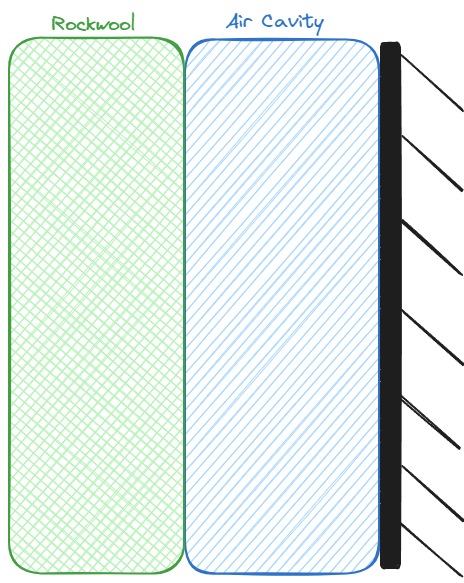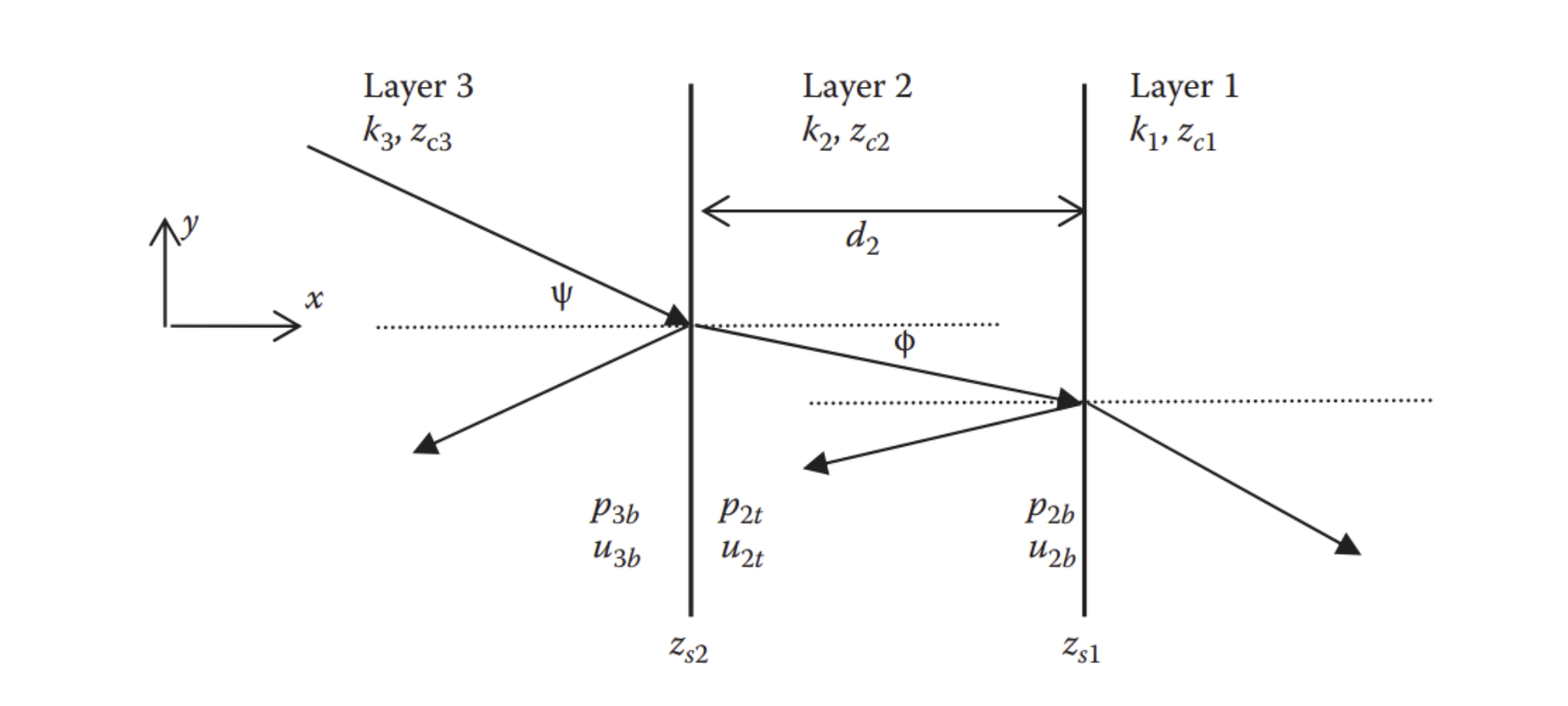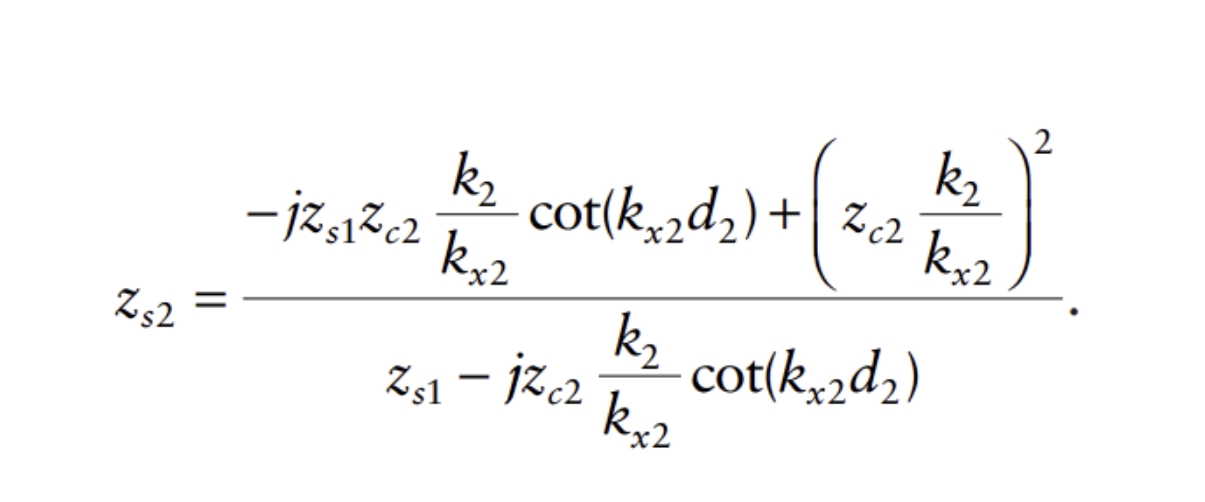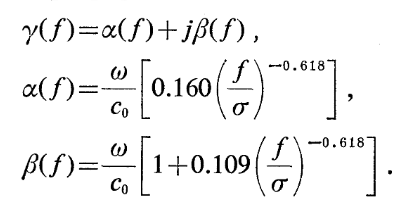Material Builder - Theory Section
The material builder is a tool to create new materials layer by layer. Each layer is created with an empirical model of that particular layer type. The layers are then assembled with a transfer matrix method. The output is the reflection coefficient/surface impedance of the construction as a whole. We can take an example of a material which is assembled like this:

Here the layers are added recursively from the rigid backing to the surface of the material assemble using the transfer matrix method as detailed in [1].

With the following transfer matrix equation:

"Where and are the pressure and particle velocity, respectively, at the bottom of the second layer; for velocity, this is defined to be in the x direction; and are the pressure and particle velocity, respectively, at the bottom of the third layer; and are the pressure and particle velocity, respectively, at the top of the second layer; is the thickness of the layer 2; is the density of layer 2; and is the x direction component of the complex wavenumber for the 2nd layer and the corresponding characteristic impedance." [1]
The equation above is a recursive equation which enables us to derive the surface impedance, layer by layer. Using this methodology we can relate the surface impedance at the top of layer 2, , to the impedance at the top of layer 1, [1].

The porous layer is modelled using the so called Miki's model [2]. It is an empirical model in which the characteristic impedance normalized with respect to air is:
With
And the propagation constant:

Where is the flow resistivity of a material.
Miki's model is most valid for for glasswool and rockwool with flow resistivity in the range of 1000-50.000 . The validity of the model is the strongest in the following frequency range [3]:
Where is the frequency, is the density of the porous layer in and is the flow resistivity of the porous layer in .
[1] Cox, T. J., & D’Antonio, P. (2016). Acoustic absorbers and diffusers: Theory, design and application (3rd ed.). CRC Press.
[2]Y. Miki, ''Acoustical properties of porous materials — Generalizations of empirical models —,'' J. Acoust. Soc. Jpn. (E), 11, 25–28 (1990).
[3] COMSOL. About the Poroacoustics Models. COMSOL Documentation. Accessed October 11, 2024. doc.comsol.com/5.5/doc/com.comsol.help.aco/aco_ug_pressure.05.144.html#1452005.